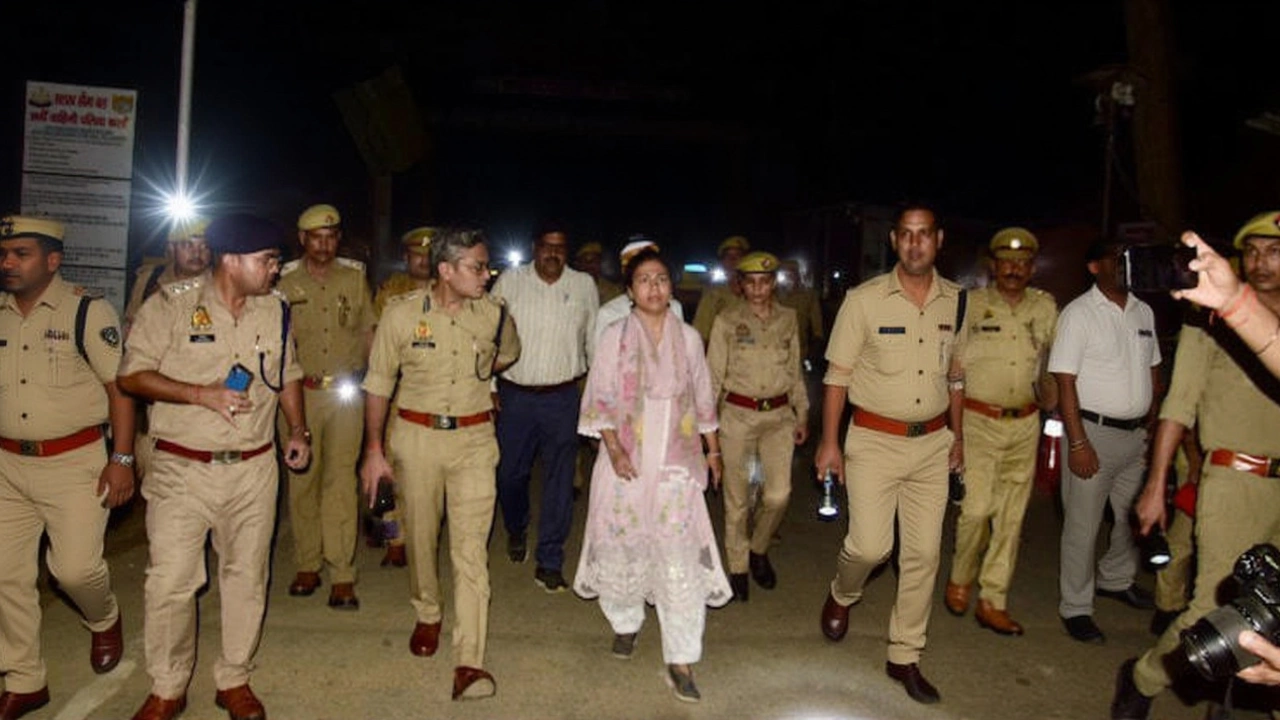Border Security: Updates, Issues, and Insights
When talking about border security, the set of measures a country uses to protect its frontiers from threats such as illegal crossings, smuggling, and armed conflict. Also known as frontier protection, it involves everything from physical barriers to high‑tech surveillance.
Key Challenges and Recent Developments
One hot spot that shapes Kashmir, a disputed region between India and Pakistan with rugged terrain and a long history of tension is the India‑Pakistan border, where border fences, concrete and barbed‑wire barriers built to deter infiltration play a critical role. The fences, now stretching over hundreds of kilometers, have reduced unauthorized crossings by a significant margin.
Modern surveillance technology, drones, AI‑driven cameras, and ground sensors that monitor movement along the line of control has become a game‑changer for patrol units, allowing faster response to suspicious activity. Drone patrols have cut detection time by 40% in contested sectors, and AI analytics flag unusual movement patterns before they become threats.
Beyond armed clashes, smuggling—the illegal transport of goods, weapons, and people across borders—remains a persistent headache that forces security agencies to coordinate with customs and local law enforcement. In recent months, joint operations between the Border Security Force and the Central Bureau of Investigation have busted several large‑scale drug networks moving through remote mountain passes.
The nation’s border troops, armed forces assigned to guard the frontier, conduct regular patrols and engage in counter‑insurgency actions. Their training now includes high‑altitude warfare, advanced navigation, and rapid‑response tactics, which are essential in the harsh climates of the Himalayas and the deserts of Rajasthan.
Legal frameworks such as the Border Management Policy of 2022 and the Armed Forces (Special Powers) Act provide the statutory backing for operations along the frontier. These laws outline the powers of security personnel, the procedures for detaining suspects, and the rights of civilians living near the border.
Historical evolution matters too. After independence in 1947, India set up the Border Security Force (BSF) in 1965 to address the growing need for a dedicated border guardian. Over the decades, the BSF has expanded its mandate from conventional patrols to include disaster relief, crowd control, and anti‑terror operations.
Cooperation with neighboring countries has also grown. In 2021, India and Pakistan agreed to a limited joint patrol mechanism along the Wagah sector, aimed at building confidence and reducing accidental fire incidents. Similar channels exist with Bangladesh and Nepal, focusing on trade facilitation and anti‑human trafficking measures.
Humanitarian concerns are part of the equation. Families separated by the line of control often face hardship, and occasional cease‑fire agreements allow limited cross‑border movement for medical emergencies. NGOs work with security agencies to ensure that humanitarian corridors remain open even during heightened tensions.
Economically, the border acts both as a barrier and a conduit. While fences and checkpoints can hinder local trade, they also protect legitimate commerce from counterfeit goods and illegal exploitation. Recent upgrades to the Integrated Check Post at Attari have streamlined customs clearance, boosting legitimate cross‑border trade by 15%.
Looking ahead, satellite monitoring, quantum encryption for communications, and autonomous ground vehicles are set to redefine border security. Experts predict that by 2030, AI‑driven command centers will process real‑time data from thousands of sensors, enabling predictive threat assessment rather than reactive measures.
Below you’ll find a curated mix of articles that cover everything from the political fallout of Kashmir debates to on‑ground reports of fence upgrades and tech experiments. Dive in to see how each piece fits into the bigger picture of safeguarding the nation’s frontiers.
Published on Oct 9
0 Comments
After violent protests in Dhangadhi, Nepal on Sept 12 2025, India's Lakhimpur Kheri DM Durga Shakti Nagpal led a foot patrol at Gauriphanta Border, sealing the crossing and tightening security.
